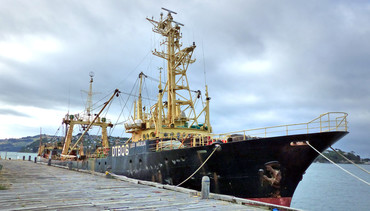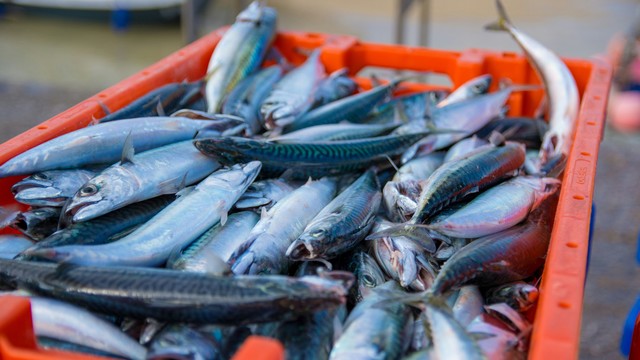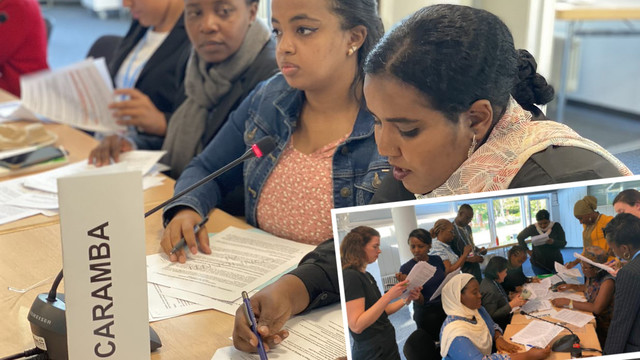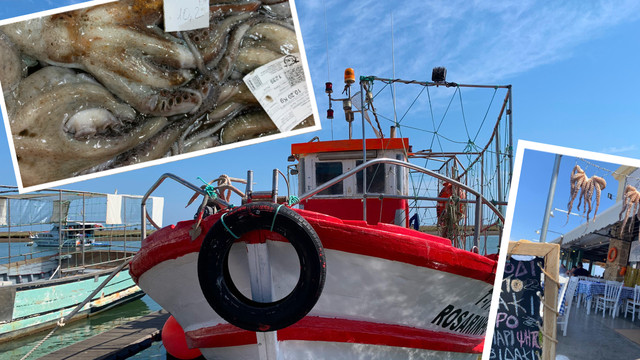Negotiators return to the high seas
Negotiators will today resume the final round of talks on a UN treaty to conserve and regulate the use of biodiversity in international waters. A central element of the proposed treaty is area-based management tools, which are crucial for biodiversity conservation and sustainable development. But negotiators must consider how protecting areas beyond national jurisdiction impacts people, particularly in vulnerable coastal communities.



A local fishing boat in the waters off Atauro Island, Timor-Leste. UN negotiators need to consider how the regulation of the use of biodiversity in international waters impacts people in vulnerable coastal communities (Photo: UN Photo/Martine Perret via Flickr, CC BY-NC-ND 2.0)
Today, UN member states begin the fourth and final round of talks on an international treaty on the conservation and sustainable use of marine biological diversity of areas beyond national jurisdiction (BBNJ).
The high seas – areas of ocean more than 200 nautical miles from shore – make up more than half of the planet’s surface and, together with the seabed, represent 95% of its occupied habitat (PDF).
And yet, beyond the jurisdiction of any nation, these waters are almost completely ungoverned and unprotected from increasing threats, including climate change, overfishing, shipping and pollution. It is essential that progress is made on equitably managing these areas to protect the resources on which so many livelihoods depend.
A decade ago, parties to the UN Convention on the Law of the Sea (UNCLOS) decided to develop a new international legally binding instrument to address this governance gap. Negotiations began in 2018 around four main pillars: marine genetic resources; area-based management tools (ABMTs), including marine protected areas (MPAs); environmental impact assessments; and capacity building and marine technology transfer.
ABMTs regulate human activity in a particular area of the ocean. They range from sectoral tools that focus on managing individual types of ocean use (for example fisheries closures), to MPAs and other integrated, cross-sectoral approaches, such as marine spatial planning, which seek to manage multiple types of activity and mitigate their cumulative impacts.
There is a strong consensus in the scientific community that ABMTs are crucial for conserving and restoring marine biodiversity by preventing overexploitation and limiting negative human impacts on marine ecosystems.
Area-based management of the high seas needs better governance
A recent publication (co-authored by IIED) evaluated the contribution of different types of ABMTs to the UN sustainable development goals (SDGs) and SDG14 in particular, which directly addresses conservation and sustainable use of the marine environment.
The assessment shows that ABMTs in areas within and beyond national jurisdiction can significantly contribute to sustainable development. Fisheries-related ABMTs, conservation-oriented ABMTs, and marine spatial planning offer the greatest potential contributions to SDG14 and to sustainable development overall.
But the study also highlights barriers to ABMTs achieving their full potential, including limited institutional capacity for enforcement, issues of equity and power relations, and fragmented governance of ABMTs – particularly in the high seas.
Currently, there is no formal framework or global body in charge of identifying and managing ABMTs in the high seas, and so spatial measures for conservation and sustainable use of these areas are implemented in a fragmented way by various regional and sectoral organisations.
As a result, less than 1% of the high seas are under the strongest form of marine protection from extractive or destructive activities (compared to more than 6% of waters within national jurisdictions), despite widespread calls to protect at least 30% of the global ocean.
The proposed BBNJ treaty would transform governance of ABMTs by creating the mechanism for nations to establish ABMTs in the high seas and facilitating the development of more holistic, cross-sectoral approaches to area-based management with a greater potential to support the SDGs.
However, it is critical that negotiations around criteria for the designation of ABMTs in the high seas consider not only the ecological and biological significance of the areas in question but also the potential impacts of management on people – particularly in vulnerable coastal communities.
High seas governance that benefits all
Although the high seas may seem remote, the ocean is an interconnected system in which the high seas are strongly linked to coastal waters via ocean currents and regular movements of migratory species.
What goes on in the high seas, therefore, has a significant influence on the health of coastal ecosystems, with impacts on services including coastal fish stocks, climate regulation, erosion control, and tourism.
Many coastal developing countries, particularly the least developed countries (LDCs) and Small Island Developing States, rely on marine resources for food and nutrition, livelihoods, government revenues and cultural heritage. In their talks on designing ABMTs, BBNJ negotiators must therefore consider the potential negative impacts of activities in the high seas on already vulnerable coastal countries, as well as the potential benefits for those countries of ABMTs in the high seas.
IIED has contributed to a body of evidence that can be used to identify which areas beyond national jurisdiction are of most importance to coastal communities in LDCs, and which coastal LDCs are most vulnerable to the impacts of human activities in the high seas.
Prioritising areas for management that are most likely to benefit vulnerable coastal countries could maximise the contribution of ABMTs in the high seas to the 2030 Agenda on sustainable development.
A strong and inclusive BBNJ treaty will provide the mechanism to implement comprehensive ABMTs in the high seas while ensuring that benefits are fairly shared. Negotiators over the next two weeks have a lot to do.




